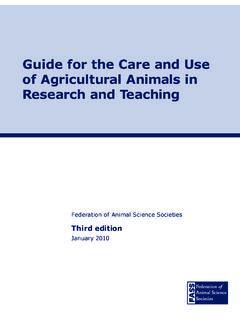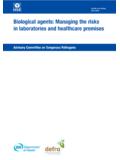Transcription of NATIONAL BIOSAFETY UPMC SYSTEMS Center for …
1 NATIONAL BIOSAFETY SYSTEMS Case studies to analyze current BIOSAFETY approaches and regulations for Brazil, China, India, Israel, Pakistan, Kenya, Russia, Singapore, the United Kingdom, and the United States UPMC Center for Health Security July, 2016 1 Table of Contents UPMC Center for Health Security Project Team .. 2 Acknowledgements .. 2 Introduction .. 3 Brazil .. 5 China .. 8 India .. 13 Israel .. 17 Kenya .. 22 Pakistan .. 25 Russia .. 28 Singapore .. 31 United Kingdom .. 35 United States of America .. 39 References .. 43 2 UPMC Center for Health Security Project Team Gigi Kwik Gronvall, PhD, Senior Associate, Matthew P Shearer, MPH, Analyst, Hannah Collins, Research Assistant, Acknowledgements This project was supported by the Naval Postgraduate School Project on Advanced SYSTEMS and Concepts for Countering WMD (PASCC) Grant No. N00244 15 1 0028 to provide funding support for research entitled "Improving Security Through International BIOSAFETY Norms.
2 3 Introduction This document summarizes the governmental policies and regulations for BIOSAFETY in research laboratories in the nations of Brazil, China, India, Israel, Pakistan, Kenya, Russia, Singapore, the United Kingdom, and the United States. In previous research, we found that there is a lack of international norms governing BIOSAFETY precautions for dangerous or especially contagious1; by describing a variety of BIOSAFETY governance approaches in these nations, we hoped to find areas of commonality which could be further developed into international norms. Online database searches for government documents, websites, media reports, and BIOSAFETY reviews were used to identify existing BIOSAFETY guidelines for each assessed nation and identify regulatory agencies, laboratory staff training programs, and incident response and reporting requirements. Additionally, information was collected regarding current notable research priorities, research and development investments, and global biotechnology rankings to provide a well rounded overview of each nation s biological research capacity and interest and their existing investments in BIOSAFETY .
3 It should be noted that this research does not address the success of implementing the relevant legislation and regulations. In comparing the BIOSAFETY policies of the ten nations, we identified the following important trends: BIOSAFETY regulation exists in all ten nations. All nations were found to have NATIONAL BIOSAFETY guidelines and regulatory bodies responsible for oversight and compliance. Information availability was extremely variable, making comparisons difficult. The quantity and quality of information available varied widely between countries, which may be due to differences in scope or transparency of the BIOSAFETY programs or due to differences in priorities for BIOSAFETY regulation. The incentives behind BIOSAFETY regulation are varied, ranging from agricultural development to infectious disease control to biotechnology investments. NATIONAL level research priorities contributed significantly to the emphasis placed on developing BIOSAFETY legislation and oversight.
4 It is therefore possible that there are resulting gaps in regulation for non priority areas. Advanced or synthetic biology is not consistently addressed by NATIONAL level BIOSAFETY policy. Some nations have very strict regulatory policies for advanced or synthetic biology, and others only address it in a limited capacity or from a very specific perspective ( , genetically modified crops). Funding information for BIOSAFETY was generally unavailable. The lack of information about funding may be a function of transparency, but it also could be that BIOSAFETY is incorporated into larger budgets and not called out as a separate item. Additionally, the BIOSAFETY funding may be spread across a number of governmental agencies rather than being a single budget item. Moving forward, these BIOSAFETY case studies will provide a foundation for identifying NATIONAL level BIOSAFETY norms and enable initial assessment of BIOSAFETY priorities necessary for developing effective NATIONAL BIOSAFETY regulation and oversight.
5 In the long term, developing international norms for BIOSAFETY will help to build confidence between nations that scientific work in research laboratories particularly work with high consequence, contagious pathogens is being carried out safely. 4 Page intentionally left blank 5 Brazil BIOSAFETY Oversight Summary There is a long history of BIOSAFETY oversight and training in Brazil, evolving with biotechnology BIOSAFETY in Brazil is largely focused on the oversight of genetically modified organisms (GMOs), but there is a pathogen select agent list and pathogen categorization similar to the US. BIOSAFETY oversight largely derives from Law , called the BIOSAFETY Law, which delineates major government responsibilities and regulations for BIOSAFETY , with responsibilities in the Ministries of Health and Agriculture. Additionally, the BIOSAFETY Law establishes a NATIONAL Technical BIOSAFETY Commission (CTNBio) under the Ministry of Science & Technology, which is responsible for the oversight of all laboratories conducting GMO Brazil has a NATIONAL Association of BIOSAFETY (AnBio) that promotes NATIONAL BIOSAFETY training and There is currently no oversight for university labs that do not conduct GMO Pathogen Characterization Brazil uses the same BIOSAFETY level designations for infectious agents as the US (BSL 1 to BSL 4).
6 Also similar to the US, Brazil established a select agent list in 2008 to classify and regulate pathogens. The Brazilian list is largely identical to the US list, but it includes several pathogens not on the US list as well as some specialized dual use ,5 Brazil regulates GMOs, categorizing them into four risk classes, from Risk Class I (Low individual/low community risk) to Risk Class IV (high individual/high community risk), and designates BIOSAFETY levels for GMOs, from NB 1 (low containment) to NB 4 (high containment). GMO work that requires production of GMOs in great scale is subject to additional BIOSAFETY regulations and containment Relevant Regulations and Legislation The major law governing BIOSAFETY is Law (2005), the BIOSAFETY Law, which delineates safety and inspection/approval for GMOs and their derivatives and establishes Brazil s NATIONAL BIOSAFETY Policy. The BIOSAFETY Law creates a NATIONAL BIOSAFETY Council (CNBS to analyze requests for approval and/or the commercial use of GMOs and their In addition to GMO regulation, the Ministry of Labor & Employment s Normative Resolution 32 (2005) delineates guidelines for protecting health worker It includes risk classification for non GMO biological agents as well as standards for infection prevention, waste disposal, environmental cleaning, and other aspects of worker safety with respect to biological The NATIONAL Technical BIOSAFETY Commission s (CTNBio) Normative Resolution 2 categorizes GMOs into four risk classes and corresponding BIOSAFETY containment levels6.)
7 CTNBio also issued Normative Instructions 8, regulating genetic manipulation in humans and human cloning10, and 9, regulating genetic intervention in human beings. 11,12 Regulatory and Oversight Agencies The NATIONAL BIOSAFETY Council (CNBS), created by Law , was designed to provide the President with assistance regarding formulation and implementation of the NATIONAL Policy of BIOSAFETY . 13 CNBS is comprised of numerous ministers, including Science & Technology, Agriculture, Justice, Health, Environment, Foreign Affairs, and Defense. Additionally, CNBS is directed to analyze, at the request of CTNBio, requests for approval and/or the commercial use of GMOs and their The NATIONAL Technical BIOSAFETY Commission (CTNBio) is located in the Ministry of Science & Technology (MCT) and is responsible for overseeing all labs conducting GMO research and assessing the risks from GMOs to the environment, agriculture, and human/animal ,7 The Ministry of Health (MOH) is in charge of monitoring public health laboratories, and the Ministry of Agriculture is responsible for overseeing agricultural The Brazilian Health Surveillance Agency (Anvisa), created in 1999 by Law 6 ,14 is charged with health surveillance for laboratories, including diagnostic and therapeutic services and others of interest for the control of risks to the public health, as well as those involving the incorporation of new technologies.
8 15 While Anvisa is associated with MOH, it remains independent and financially The BIOSAFETY Commission in Health (CBS) was established in MOH for the purpose of defin[ing] strategies for the assessment and monitoring of actions related to BIOSAFETY , particularly establishing nationally uniform The NATIONAL Biotechnology Committee oversees implementation of the NATIONAL Biotechnology Development Policy, in coordination with a range of agencies including CTNBio. The committee is comprised of representatives from a number of ministries, the Office of the Chief of Staff, Anvisa and other BIOSAFETY Associations Brazil s NATIONAL Association of BIOSAFETY (AnBio) was founded in 1999 as a non profit nongovernmental multidisciplinary organization promot[ing] BIOSAFETY as a field of knowledge. 3 AnBio is affiliated with the American Biological Safety Association (ABSA International) and the European BIOSAFETY Association (EBSA),3 and they conduct training on a range of topics relevant to In 2011, designated as the Year of BIOSAFETY in Brazil, AnBio established the Seal of BIOSAFETY (Bioselo) to improve BIOSAFETY and infection control standards at healthcare facilities,17 including clinical laboratories and research BIOSAFETY officers and Institutional BIOSAFETY Committees Each entity conducting work with GMOs is required to have a BIOSAFETY Internal Commission (CIBio) under Law ,7 specifically for the purpose of monitoring and surveillance of activities with GMO and their for the fulfillment of bio safety norms.
9 19 The CIBio is responsible for submitting requests to conduct GMO work to CTNBio, conducting risk assessments and annual facility inspections, implementing BIOSAFETY training and inspection programs, and investigating accidents. Each project must be assigned a Main Technician responsible for ensuring adherence to BIOSAFETY regulations imposed by CTNBio and the institution s CIBio, obtaining authorization to commence GMO research, ensuring proper BIOSAFETY training of technical and support staff, reporting accidents to the CIBio, and ensuring proper equipment and BIOSAFETY infrastructure Accident and Incident reporting Hospital laboratories have a formal notification system for The CIBio and CTNBio at each institution working with GMOs have the authority and responsibility to investigate laboratory accidents resulting from GMO research, as delineated in Law ,7 Article 7 of Law and CTNBio s Normative Resolution 1 mandate that accidents involving genetic engineering research be investigated immediately and reported within 5 days to the competent authority.
10 7,19 Additionally, these regulations also require notifying CTNBio and applicable public health, agricultural, environmental and defense authorities of any accident that may cause dissemination of GMO and GMO derivatives. 7 The Main Technician is responsible for immediately reporting accidents involving GMOs to the institution s ,19 Synthetic/Advanced Biology Brazil has embraced synthetic biology, particularly as a way to develop sustainable Biotechnology is a priority research area in Brazil. The University of Sao Paulo operates the Biomass SYSTEMS and Synthetic Biology Center (BSSB or SynBio Center ) to support synthetic biology research across genetics, biomedical engineering, biology, chemistry, and other As one of the world 7 leaders in sugarcane based ethanol, Brazil is well placed to be a growing factor in biofuel development and biomass Crucially, the Sao Paulo Research Foundation (FAPESP) has identified bioenergy as one of its four primary research Training Brazil has a long history of BIOSAFETY training, with programs going back to at least the In 2000, the NATIONAL Health Foundation (FUNASA.)



